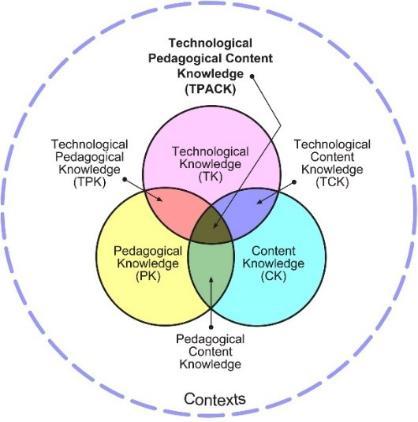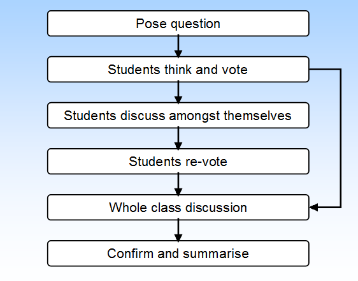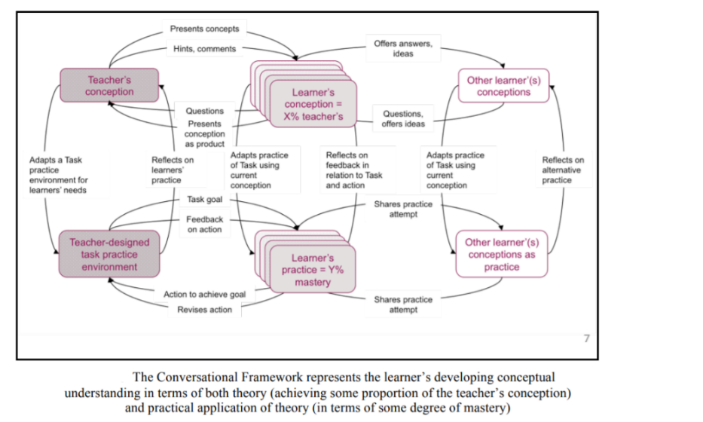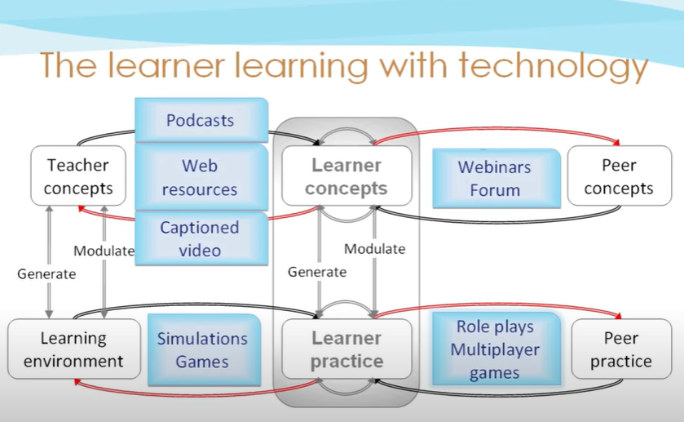Teachers create a learning space such that students learn through actions including acquiring, experiencing, experimenting and reflection as described in Kolb’s learning cycle (Kolb, 1984). Actions can be individual, peers, professionals and communities. iBL is framed from a combination of learning theories of which Technological, Pedagogical, Content Knowledge Framework (TPCK/TPACK) (Mishra and Koehler, 2006) connect three domains of knowledge that teachers need to have namely content knowledge, pedagogical knowledge and technological knowledge deploying in the 21st century learning space. Teachers have been perceived as knowledge providers or content experts. However, teachers need to have pedagogical knowledge in their disciplines and deploy a variety of pedagogies to meet needs of students, the digital native who come from diverse ethnic background, language competence (first and second), learning habits and styles, prior educational experiences and technical experiences. Teaching in synchronous and asynchronous environment, teachers can deploy appropriate technical tools, devices and platforms that can best engage their students. Through using the tools, students have opportunities to build competence.

image ©2012 by tpack.org
Nevertheless, creating learning opportunities teachers deploy theories developed by educational scholars over the years. Piaget’s constructivist learning theory means that students construct meanings on concepts through building new knowledge from prior knowledge; teachers provide problems or scenarios for students to explore and seek answers to support their own questions while teachers make guidance and feedback when students work towards their own conclusions. For science educators, like Prof. Eric Mazur from Harvard University, he has his students think individually on questions in physics (Mazur, 1997). Instead of providing the key to the questions, his students are asked to explain individual answers with peers to facilitate thinking aloud on their conceptions. Students are asked to reconsider the same question to see if students themselves or their peers can come with correct answers (Peer Instruction through Active Learning: Eric Mazur). The process of peer instruction allows clarification of concepts through student and student interaction.

Peer Instruction through Active Learning: Eric Mazur
Prof. Diane Laurillard from Institute of Education, University of London extends cognitive understanding with theories in practice such that student individually gradually master skills through personal reflection on actions and feedback received from practice with the technological tools/device/platforms, and gain renewal understanding through interactions with peers and collaboratively shared attempts of practice in the technological tools/device/platforms as elaborated in the Conversational Framework (Laurillard, 2009; Learning Technology: Redefining the Field - Diana Laurillard).

As students are exposed to different technological tools to practise skills and apply knowledge in disciplines, interactions with the tools, teachers and peers become centre of the learning process.

Source: https://www.youtube.com/watch?v=JzIAYVuHll8
The Conversational Framework addresses the human interactions in the context of teaching and learning. Community of Inquiry (CoI) illustrates the essence of three domains (cognitive, teaching and social) for meaningful learning experiences that can be applied in synchronous and asynchronous learning environment (Garrison, Anderson and Archer, 1999). CoI emphasizes teachers as learning design architects, they create the learning context, i.e. what to learn (levels of challenges according to Bloom’s taxonomy) and how learning happens (e.g. individually, in teams, collaboratively and competitively, providing intrinsic and extrinsic award), and the learning culture, i.e. inclusivity and group cohesion).
